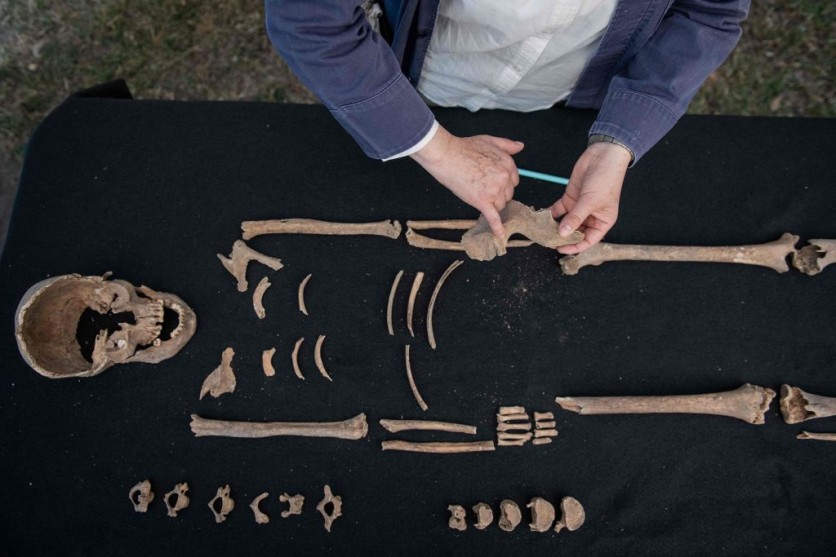An archaeological excavation in Leeds has uncovered an ancient lead coffin in a previously unknown 1,600-year-old cemetery, which could help to unravel the mysteries of one of the most important periods in British history.
The coffin is believed to contain the remains of a late-Roman aristocratic woman and was discovered along with the remains of more than 60 men, women, and children who lived in the area over a thousand years ago.
Burials in the cemetery are believed to include both late-Roman and early-Saxon people, with the burial customs of both cultures found in different graves.

The Fall of the Roman Empire
Archaeologists hope that this site can help to shed light on the largely undocumented and important period between the fall of the Roman Empire in around 400AD and the establishment of the Anglo-Saxon kingdoms which followed.
After the Romans retreated from Britain, West Yorkshire lay in the Kingdom of Elmet for just over 200 years. The presence of two communities using the same burial site is highly unusual, and it is hoped that whether their use of this graveyard overlapped or not will determine just how significant the find is.
Analysis of the finds, including carbon dating to establish precise timeframes, and chemical tests to determine details such as individual diets and ancestry, will be carried out now that the excavation is complete.
The discovery was made last spring but could only be revealed now due to the need to keep the site safe while initial tests on the finds were being carried out. Although the exact location remains confidential, the excavation was partly prompted by the previous discovery of late Roman stone buildings and a small number of Anglo-Saxon-style structures nearby.
"It is every archaeologist's dream to work on a 'once in a lifetime' site, and supervising these excavations is definitely a career-high for me," Kylie Buxton, the on-site supervisor for the excavations, said in a press release statement.
"There is always a chance of finding burials, but to have discovered a cemetery of such significance, at such a time of transition, was quite unbelievable.
Read Also : Archaeologists Uncover the Collapse of an Ancient Empire from 3,200-year-old Trees in Turkey
Early Christian Beliefs
The Roman coffin is not the only remarkable find. Burial practices found in the cemetery could indicate early Christian beliefs, as well as Saxon burials accompanied by personal possessions such as knives and pottery.
After the analysis of the finds has taken place, the lead coffin is hoped to be displayed in an upcoming exhibition at Leeds City Museum which will explore death and burial customs from across the world.
The discovery has the potential to shed new light on a vital period in British history and to help to unlock the secrets of the transition between the Roman Empire and the establishment of the Anglo-Saxon kingdoms.
Related Article : 2,000-Year-Old Cave Art May Suggest that Ice Age Hunter-Gatherers Were the First to Use a Calendar - New Study





